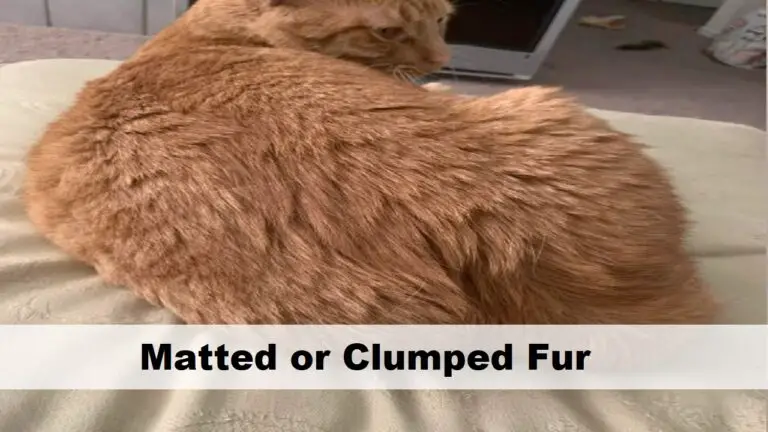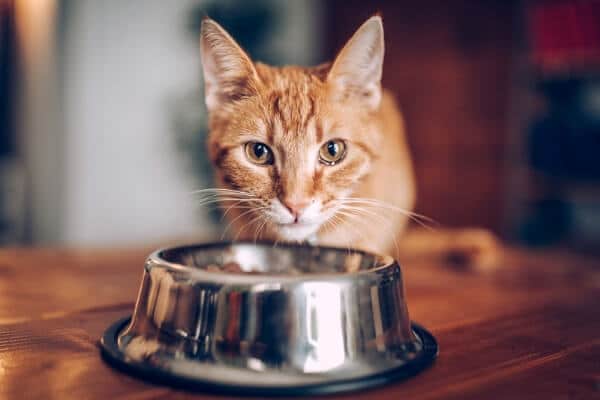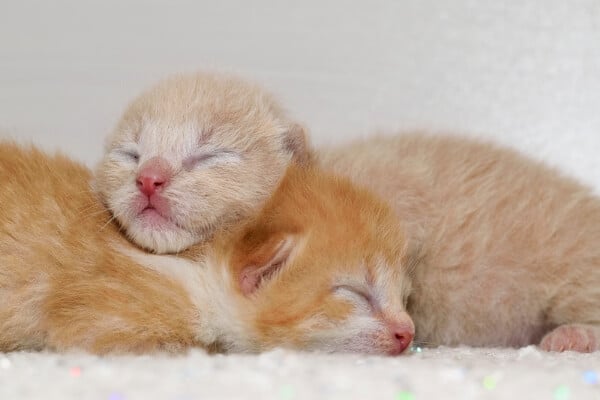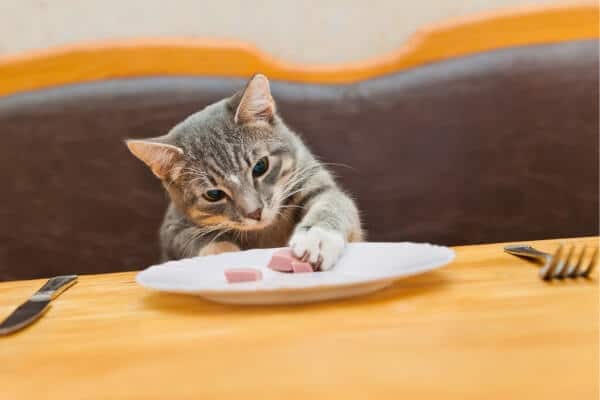Cat Only Licks Gravy Off Wet Food And Won’t Eat The Meat. What Should I Do?
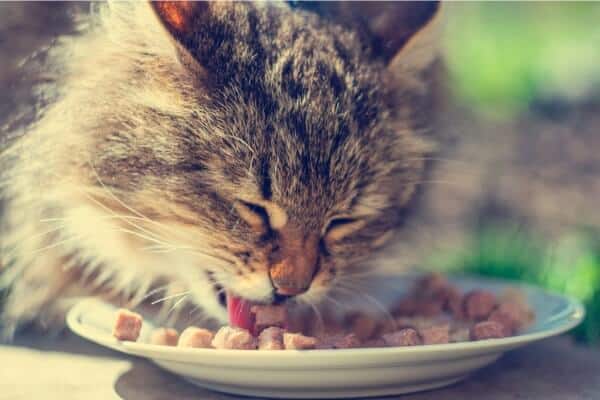
You lovingly craft the perfect diet for your cherished feline friend, carefully selecting the highest quality wet food, rich with succulent chunks of meat bathed in a delicious gravy. You present this culinary masterpiece to your cat, expecting them to dive right in. However, to your surprise, they embark on a journey of licking up every last drop of gravy and leaving the nutritious meat untouched. This situation leaves you scratching your head and questioning your understanding of your cat’s dietary preferences. “Why does my cat only lick the gravy?”
Cat only lick the gravy from their wet food and abandon the meat, mainly because they have become finicky and do not like the taste or texture of the meat or maybe they are just not hungry. This is more pronounced in senior cats due to their diminished sense of taste and smell. Underlying health issues like gastrointestinal upset, or dental issues, make solid food consumption difficult for cats.
To encourage your cat to eat every morsel of the food, consider offering a variety of food flavors and textures. Also, monitor their feeding habits, and most importantly, consult a veterinarian if you suspect any health-related concerns.
Remember to make any dietary changes gradually to avoid upsetting your cat’s stomach. A balanced diet is crucial for your cat’s overall health, so ensure they’re getting all the necessary nutrients, not just a gravy indulgence. In this article, we go deeper to unravel the mysteries of this gravy-licking behavior and seek to understand what drives our cats to exhibit such quirky dining habits.
Why Does My Cat Only Lick The Gravy From Wet Food?
Cats have unique feeding behaviors and preferences that can vary from one individual to another. When it comes to licking the gravy from wet food and ignoring the solid bits, there are several reasons why your cat might be exhibiting this behavior:
1. Taste Preference
Cats have a highly developed sense of taste, and they can be quite selective about the flavors they enjoy. The gravy in wet cat food often contains concentrated meat or fish juices, which are rich in amino acids and other compounds that provide a burst of flavor.
Your furry friend might be naturally drawn to these intense tastes, making it more inclined to lick the gravy. In the wild, cats are attracted to the taste of blood and body fluids from their prey, which further supports this preference for the flavorful gravy over the solid pieces.
2. Texture Preference:
Cats can be sensitive to the textures of their food, and this can influence their eating habits. The gravy in wet food tends to have a smoother and more liquid consistency, which some cats find more appealing and easier to consume.
On the other hand, the solid chunks might have a chewier or tougher texture, especially if they contain meat or fish that’s been cooked or processed. Cats with dental issues, such as missing teeth or gum sensitivity, may find it more comfortable to lick the gravy rather than chew on the chunks.
3. Dental Or Mouth Problems
If your cat consistently avoids the solid parts of their wet food, it could be because of dental pain or issues with their gums or even jaws. Eating the softer gravy doesn’t require as much chewing, so it’s a more comfortable option for cats with oral discomfort.
4. Your Feline Is Not Hungry
If your cat is not hungry, it might just lick the gravy from the wet food and leave the solid parts. This can happen if your feline is overfed, fed too frequently, or if they’ve had access to other food sources (like hunting outside). The gravy in wet food is tasty and easy to consume, so even a cat that isn’t particularly hungry might still enjoy licking it up.
It’s important to note that while licking the gravy might not be harmful in moderation, it’s essential to ensure your cat is getting a balanced diet that meets its nutritional needs. You can try gently mixing the gravy with the solid parts of the food to encourage a more complete meal.
5. Your Cat Wants Additional Nutrients
Cats are obligate carnivores, meaning their diet requires a high proportion of animal-based protein and other essential nutrients. While the gravy in wet cat food may contain some nutrients, it might not provide all the necessary elements found in the solid chunks. This is a major reason new cats may not eat.
Despite this, if your cat’s nutritional needs are already being met, it may still indulge in licking the gravy as a way to enjoy the flavors and aromas without necessarily seeking additional nutrients.
6. Learned Behavior
Cats are intelligent animals and can learn from past experiences. If you’ve rewarded your cat for licking the gravy in the past, either intentionally or unintentionally, it may have learned that this behavior leads to positive outcomes.
For example, if you’ve given your cat extra attention or provided more gravy when it licks, the cat may have associated the behavior with receiving a treat or special treatment, reinforcing the habit.
7. Gastrointestinal Problem
Gastrointestinal issues could be a significant factor influencing your cat’s eating habits, including only licking the gravy from wet food. Conditions like Inflammatory Bowel Disease (IBD), gastroenteritis, pancreatitis, or gastritis can disrupt the normal digestive process, causing discomfort or difficulty when consuming solid food.
As a result, cats with these conditions may resort to only consuming the liquid part of their food—the gravy—which is easier to digest and less likely to trigger discomfort. This also happens with dogs. Parasitic infestations, such as roundworms or tapeworms, can also lead to gastrointestinal discomfort and similar behavior from your cat.
8. Organ Issues
Organ issues can significantly affect your cat’s dietary habits, including their preference for only licking the gravy from their wet food. Diseases such as kidney disease or liver disease, and conditions like hyperthyroidism, can impact a cat’s appetite and dietary behaviors in various ways.
These conditions often lead to reduced ability to smell and taste, or induce feelings of nausea, which can make solid food less appealing to your cat. The strong aroma and taste of the gravy in wet food can thus become more attractive to them under these circumstances.
Are Air Fresheners Bad For Cats? 7 Best Cat-Friendly Air Fresheners
Is Wet Cat Food With Gravy Good For Cats?
Wet cat food with gravy can be a beneficial option for cats when incorporated into their diet appropriately. The inclusion of gravy in wet cat food can provide several advantages for feline health. Firstly, the gravy adds moisture to the meal, which helps increase the cat’s overall water intake. Many cats have a natural aversion to drinking water, so feeding them wet food with gravy can help prevent dehydration and support kidney function, especially in older cats or those with urinary tract issues.
Secondly, the gravy enhances the taste and aroma of the cat food, making it more appealing to picky eaters. This is particularly important for cats that might be experiencing a reduced appetite due to illness or stress. The enticing nature of the gravy can encourage them to eat and maintain healthy body weight. However, it’s crucial to ensure that the gravy is made from high-quality ingredients and does not contain excessive amounts of salt, as some commercial products may use additives that are not ideal for feline health.
While wet cat food with gravy can have these benefits, simply relying on gravy-laden wet food could lead to an imbalance in their nutritional needs. Therefore, it’s essential to choose high-quality wet cat food that provides a complete and balanced diet, with gravy as a complement rather than the primary source of nutrition.
Can Cats Survive On Just Gravy?
Cats cannot survive on just gravy alone as a complete diet. Gravy typically consists of liquid from cooking meat, and while it may be flavorful and appealing to cats, it lacks some essential nutrients required for their overall health and well-being. Cats are obligate carnivores, which means they primarily need meat-based diets to thrive. They have specific dietary requirements that include high levels of protein, taurine, certain amino acids, vitamins, and minerals, which cannot be adequately fulfilled by gravy alone.
A diet solely based on gravy would lack essential nutrients like protein and taurine, which are crucial for a cat’s muscle development, immune system support, and overall organ function. A prolonged diet deficient in these nutrients can lead to malnutrition and various health issues, such as muscle weakness, heart problems, and impaired vision.
To ensure a cat’s well-being, a balanced and complete diet is essential. This typically consists of high-quality commercial cat food that provides all the necessary nutrients required for their specific life stage (kitten, adult, or senior) and health needs.
How To Make A Cat That Only Licks Gravy Off Wet Food To Eat The Chunks
If you are looking to encourage your cat to eat more of the wet food chunks, there are some steps you can take to make the food more appealing:
1. Mix The Gravy Thoroughly
Ensure that the gravy is evenly distributed throughout the wet food, coating the chunks. This might entice your cat to eat the chunks along with the gravy.
2. Try A Different Cat Food
Cats have individual preferences, so you could experiment with different brands or types of wet food to find the one that your cat enjoys the most. Make sure you switch between foods gradually to avoid gastrointestinal issues.
3. Warm The Food
Warming the wet food slightly can release more aromas, which can make it more appetizing to your cat.
4. Add A Topper
You can add some tasty toppers, like freeze-dried meat, a little bit of tuna juice, or small amounts of cooked chicken, to make the wet food more enticing.
5. Interactive Feeding
Use interactive feeders or puzzle toys designed for cats to make mealtime more stimulating and fun. These toys often require the cat to “hunt” for their food, which can increase their interest in eating.
6. Feed At Regular Intervals
Establish a feeding schedule and stick to it. Cats are creatures of habit, and having a routine can help with their eating habits.
7. Avoid Free-feeding
It’s generally better not to leave food out all day for your cat to graze on. Controlled meal times can help encourage them to eat when the food is offered.
8. Monitor Your Cat’s Health
If your cat suddenly changes its eating habits or stops eating altogether, it’s essential to consult with a veterinarian. A loss of appetite or changes in eating behavior could be a sign of an underlying health issue.
Remember, cats are independent animals, and their preferences may change over time. It’s essential to respect your cat’s individuality and avoid forcing them to eat in a specific way. If your cat is eating a balanced diet and maintaining a healthy weight, there’s generally no need to worry too much about the specific way they eat their wet food.
Best Gravy Recipes You Can Make For Your Cat At Home
If your veterinarian approves and recommends supplementing your cat’s diet with occasional treats, you can consider preparing a simple homemade gravy using safe and cat-friendly ingredients. Here’s a basic recipe to get you started:
1. Simple Chicken Gravy
Ingredients: 1 boneless chicken breast, 1 cup of water, 1 tbsp cornstarch.
Steps
1. Boil chicken breast until fully cooked.
2. Remove the chicken and let it cool, keep the water.
3. Dissolve cornstarch in a bit of cold water, then add to the hot chicken water.
4. Stir until it thickens to a gravy consistency.
2. Pumpkin Gravy
Ingredients: 1 cup of canned pumpkin puree, 1 cup of chicken broth, 1 tsp cornstarch.
Steps
1. Mix pumpkin puree and chicken broth in a pan.
2. Heat until simmering.
3. Mix cornstarch with a little cold water and add to the pan.
4. Stir until it thickens.
3. Fish Gravy
Ingredients: Fish(fresh if possible) 1 cup of water, 1 tbsp cornstarch.
Steps
1. Drain the sardines, and keep the water.
2. Mash the sardines with a fork.
3. Dissolve cornstarch in a bit of cold water, then add to the sardine water.
4. Heat and stir until it thickens.
4. Tuna Gravy
Ingredients: 1 can of tuna in water, 1 tbsp cornstarch.
Steps
1. Drain the tuna, and keep the water.
2. Mash the tuna with a fork.
3. Dissolve cornstarch in a bit of cold water, then add to the tuna water.
4. Heat and stir until it thickens.
5. Beef Gravy
Ingredients: 1/2 cup of minced beef, 1 cup of beef broth, 1 tbsp cornstarch.
Steps
1. Cook the minced beef fully.
2. Dissolve cornstarch in a bit of cold water, then add to the beef broth.
3. Combine cooked beef and broth mixture and heat.
4. Stir until it thickens to a gravy consistency.
6. Pork Gravy
Ingredients: 1/2 cup of minced pork, 1 cup of pork broth, 1 tbsp cornstarch.
Steps
1. Cook the minced pork thoroughly.
2. Dissolve cornstarch in a bit of cold water, then add to the pork broth.
3. Combine cooked pork and broth mixture and heat.
4. Stir until it thickens to a gravy consistency.
Remember, this is just a treat and should not replace your cat’s regular meals. Additionally, always consult your veterinarian before introducing any new foods into your cat’s diet, especially if they have any health conditions or dietary restrictions.
Best Wet Food For A Fussy Cat
When dealing with a fussy cat, finding the right wet food can be a challenge. Cats have individual preferences, and what works for one cat might not appeal to another. However, there are some popular and highly regarded wet cat food options that many cats find tasty.
1. Hill’s Science Diet Wet Cat Food
Offers precise nutrition and high-quality ingredients. Available in a variety of flavors and textures to cater to your cat’s preferences.
2. Royal Canin Feline Nutrition
Known for their breed-specific formulas, these wet foods meet the unique nutritional needs of various cat breeds and offer a variety of textures.
3. Tiki Cat Luau Grain-Free Wet Food
Tiki Cat’s recipes feature high-quality, shredded meat, poultry or fish served in a delicious consommé. This line offers a variety of unique flavors to keep fussy cats interested in mealtime.
4. Weruva Cats in the Kitchen Grain-Free Wet Cat Food
Weruva offers a variety of fun, playful flavors in textures ranging from purees to stews. They use high-quality, human-grade ingredients like boneless, skinless white breast meat chicken or lamb, providing a source of high-quality protein. The food also often includes pumpkin, which can help with digestion.
5. Purina Pro Plan Savor Adult Wet Cat Food
Purina Pro Plan Savor wet cat food is designed to provide an enticing mealtime experience. It includes a variety of textures, including classic pate, chunks in gravy, and tender rings in gravy, each providing a different sensory experience for your cat.
6. Fancy Feast Gravy Lovers Wet Cat Food
Fancy Feast’s Gravy Lovers line is a decadent offering for cats that can’t get enough of gravy. The recipes include small, delicate bites with real meat or fish covered in a delicious gravy. They offer a variety of flavors, from chicken and beef to seafood, to keep your cat interested in mealtime.
7. Nutro Perfect Portions Grain-Free Wet Cat Food
Designed to deliver a fresh meal with the perfect portion for your cat every time, reducing waste and ensuring freshness. It’s grain-free and doesn’t contain any artificial colors, flavors, or preservatives.
Always consult your vet when making significant changes to your cat’s diet, and remember that individual cat preferences can vary widely. What one cat loves, another may not, so it may take some trial and error to find the right food for your fussy cat.
My Cat Who Previously Eats Wet Food Suddenly Stopped
When a cat who has been eating wet food suddenly stops, it could be due to various reasons. Cats can be finicky eaters, and changes in their eating habits might indicate an underlying issue that needs attention. Here are some potential reasons why your cat might have stopped eating wet food:
1. Health Issues: Cats can develop various health problems that affect their appetite. Dental issues, facial pain or whisker problems, gastrointestinal pain, infections, or other underlying medical conditions may make eating wet food uncomfortable or unappealing for your cat.
2. Food Preference: Cats are known for their selective eating habits. They might have gotten tired of the particular brand or flavor of wet food you were offering. Cats may also prefer a specific texture or temperature of food.
3. Stress or Anxiety: Changes in the environment, such as moving to a new home, the introduction of new pets, or changes in the household, can cause stress and lead to a decreased appetite.
4. Feeding Routine: If there have been changes in the cat’s feeding routine, it could impact their appetite. Cats prefer consistency, so altering the feeding times or locations might affect their eating habits.
5. Spoiled Food: Wet cat food can spoil if not stored properly or if it’s past its expiration date. Cats have a strong sense of smell, and if the food smells off, they may refuse to eat it.
6. Feeding Area Issues: Cats are sensitive to their surroundings, and if they associate their feeding area with negative experiences (e.g., loud noises, or other pets bothering them), they might avoid it altogether.
What To Do
1. Monitor Your Cat: Keep a close eye on your cat’s behavior and overall health. If they show other signs of illness, such as lethargy, vomiting, or diarrhea, consult a veterinarian promptly.
2. Try Different Foods: Offer a variety of wet cat foods with different flavors and textures to see if your cat’s preferences have changed. You can also try warming the food slightly, as the aroma might make it more appealing.
3. Check for Dental Issues: Examine your cat’s mouth for any signs of dental problems, such as broken teeth or red, inflamed gums. Dental issues can make eating painful, and a vet should address them.
4. Reduce Stress: Create a calm and comfortable environment for your cat. Provide hiding spots, elevated spaces, and playtime to reduce anxiety.
5. Food Storage: Make sure you are storing the wet cat food properly and check the expiration dates.
6. Feeding Routine: Try to maintain a consistent feeding schedule and location to help your cat feel secure during mealtimes.
7. Gradual Transition: If you want to switch to a different brand of wet food, do it gradually by mixing small amounts of the new food with the old one over several days.
If your cat’s eating behavior doesn’t improve, or if you notice any other concerning symptoms, it’s crucial to consult with a veterinarian. They can conduct a thorough examination to identify any underlying health issues and provide appropriate treatment.
Can I Mix Gravy With Cat Dry Food Or Gravy Granules?
Yes, you can mix gravy with cat dry food or gravy granules, but it’s essential to do so in moderation and with caution. While adding a small amount of gravy can make the dry food more palatable, it’s crucial to ensure that the majority of their diet remains focused on high-quality, meat-based cat food to meet their nutritional needs.
When mixing gravy with feline dry food, it’s essential to use gravy that is specifically formulated for cats. Regular gravy meant for human consumption may contain ingredients that can be harmful to cats, such as onions, garlic, or excessive salt. Look for pet-friendly gravies that do not contain harmful additives. Additionally, if you’re using gravy granules, make sure they are free from any toxic ingredients and additives before mixing them with your cat’s food.
Introducing gravy occasionally can be a helpful strategy for picky eaters or older cats who may have trouble chewing or have decreased appetite. It can also provide additional moisture to their diet, aiding in hydration, especially if your cat doesn’t drink enough water. However, excessive use of gravy can lead to weight gain and other health issues, so it’s crucial to use it as a treat rather than a regular addition to their meals.
Do Cats Get Tired Of Eating The Same Food?
Cats, like humans and many other animals, can indeed get tired of eating the same food. While cats are known for being creatures of habit, they also have an instinct for variety in their diet. In the wild, cats would consume a diverse range of prey, and this natural instinct carries over to their domesticated lives. When fed the same food repeatedly, cats may become bored and disinterested in their meals. This can lead to decreased appetite, reluctance to eat, and potential nutritional deficiencies if the food lacks essential nutrients.
To ensure that cats remain interested in their food and receive a balanced diet, cat owners need to provide a variety of flavors and textures. Rotating between different types of high-quality cat foods, including wet and dry options, can help keep the cat engaged during mealtime. Additionally, introducing occasional treats or incorporating small amounts of safe human food (such as plain cooked meat) into their diet can offer a sense of novelty and satisfy their natural curiosity for different tastes.
Final Thoughts
Cats can be a mystery, and their eating habits are no exception. If your cat is only licking the gravy off their wet food and leaving the meat behind, they are telling you something about their preferences. Experimenting with different food textures and flavors or warming up their food can make a world of difference. It’s all about figuring out what makes their whiskers twitch in delight.
Remember, every cat is an individual, and what works for one might not work for another. It’s crucial to monitor your cat’s eating habits and consult your veterinarian if any dramatic changes occur or if you’re worried about their nutritional intake. Be patient, and don’t be disheartened if it takes some trial and error to discover what tickles their taste buds.
At the end of the day, a happy cat equals a happy owner. Knowing you’ve satisfied your cat’s discerning palate is all part of the fun and joy of sharing your life with these remarkable creatures. Keep showing your furry friend love and attention, and you’ll eventually find a tasty solution to please even the fussiest of feline food critics.
Read related posts about

